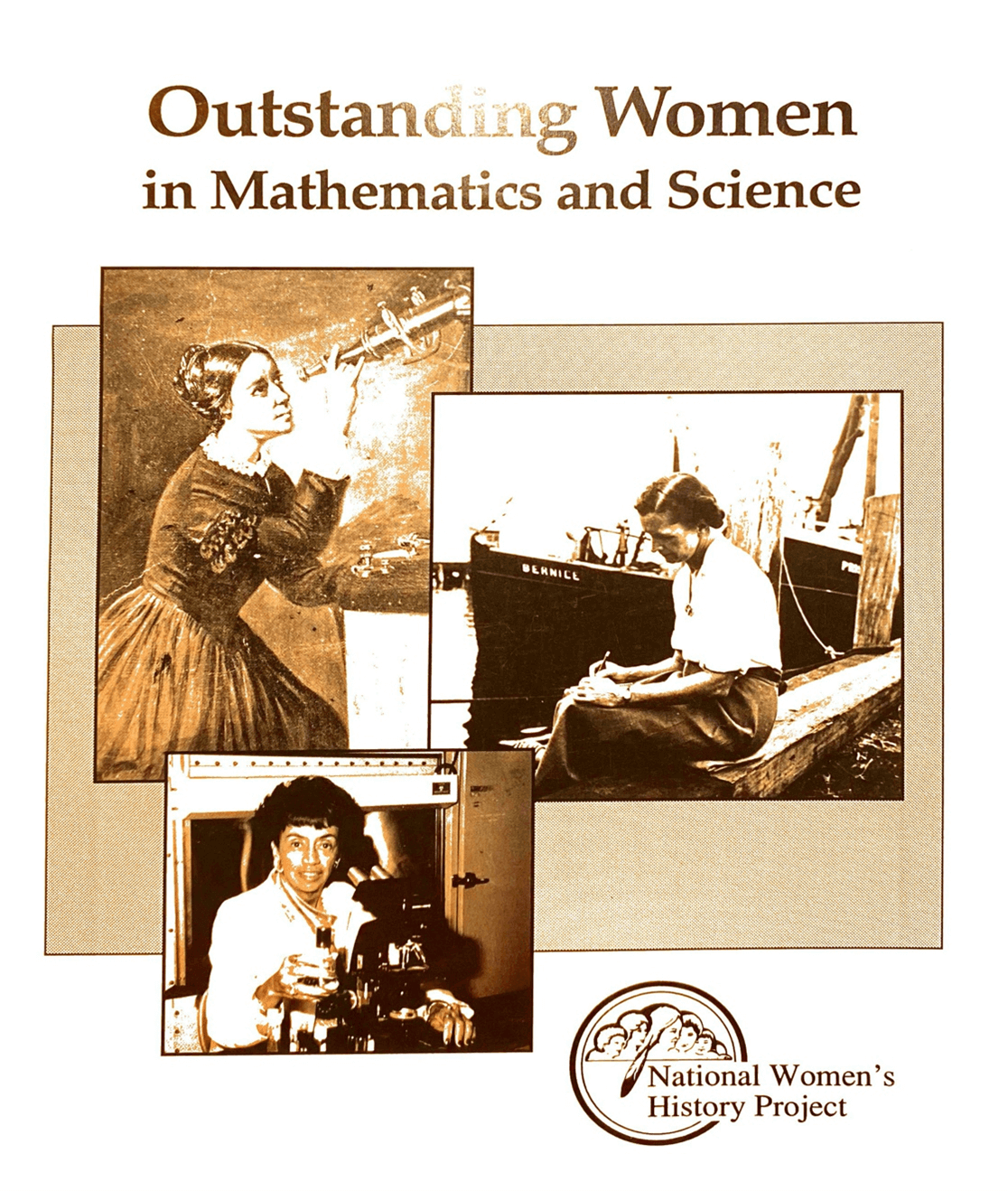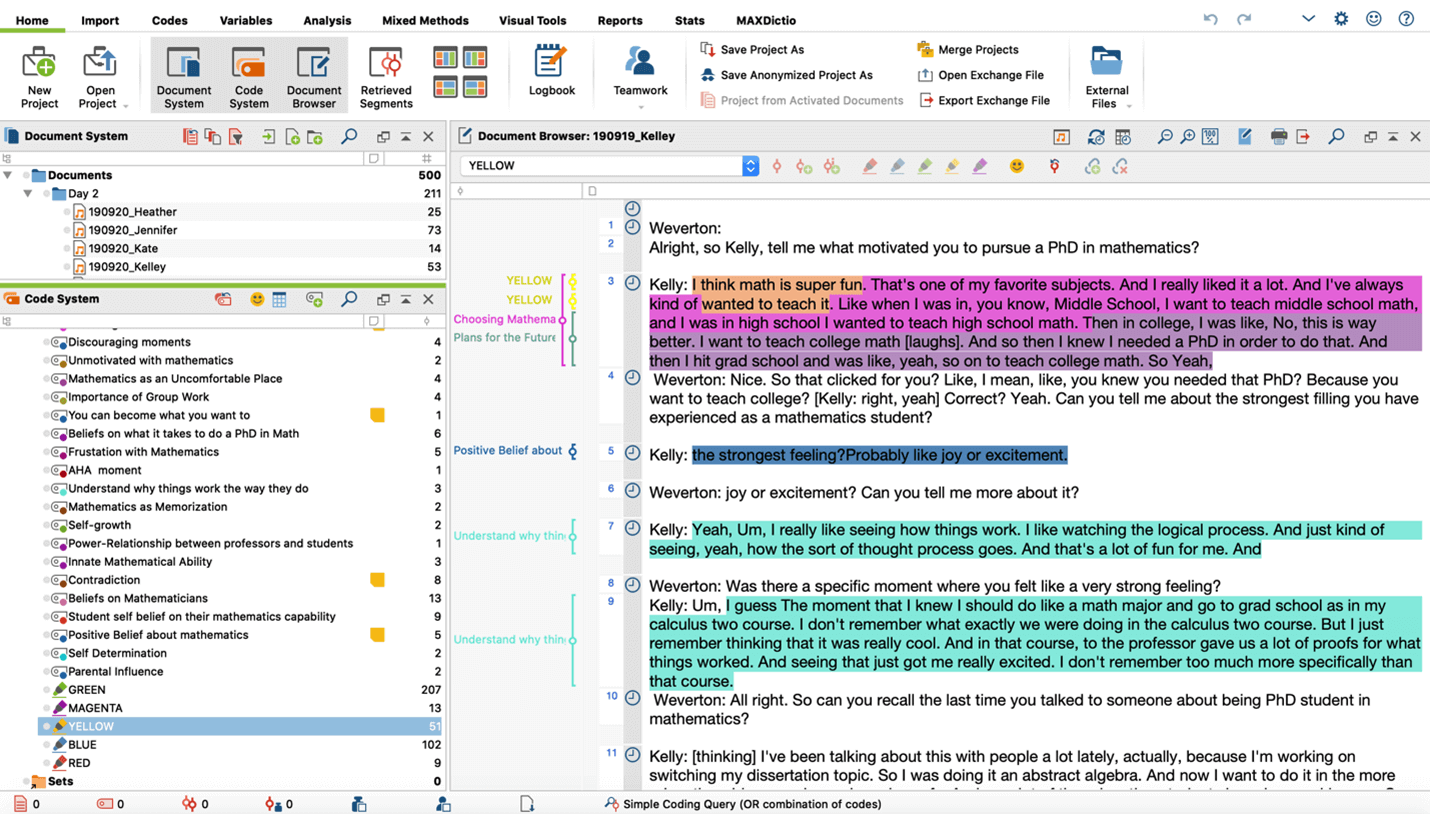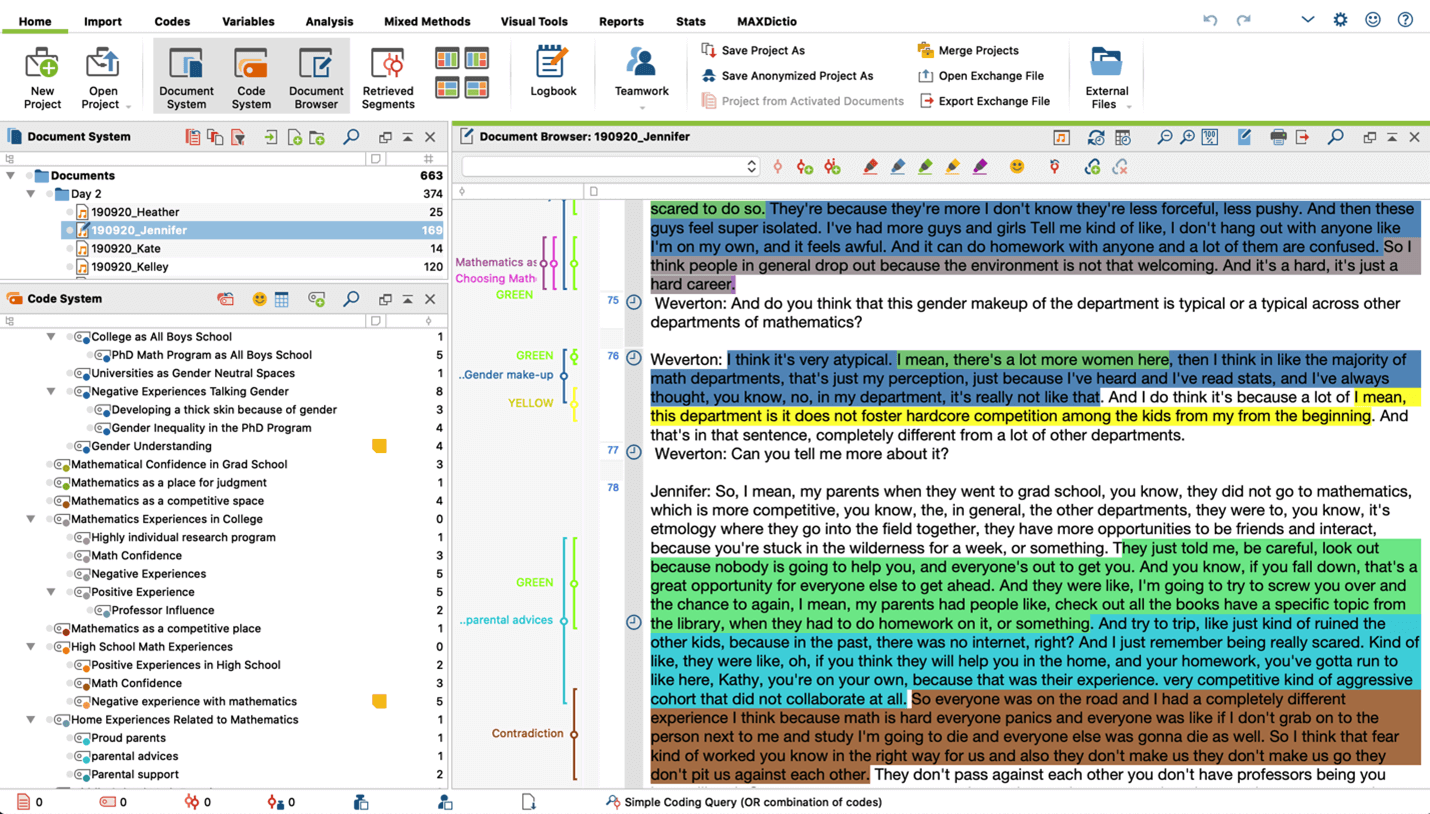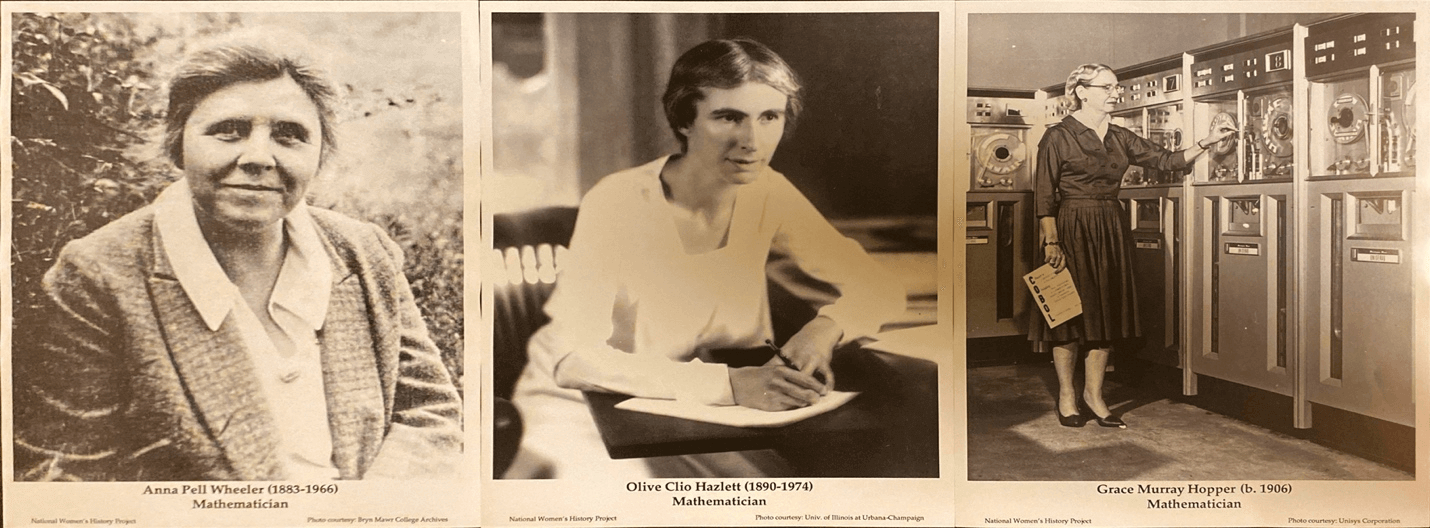Guest post by Weverton Ataide Pinheiro.
This is my second and final research report from the 2019 MAXQDA Research for Change grant awarded by VERBI Software and MAXQDA. When I proposed this project one year ago, I was intrigued by the fact that people from historically marginalized groups were not choosing mathematics due to the oppression one needs to go through in mathematical fields. Research has shown that doing mathematics is doing masculinities (Mendick, 2005), and it is hard for women in particular to find a community in mathematical spaces.
 Figure 1: Cover of the National Women’s History Project Display Set
Figure 1: Cover of the National Women’s History Project Display Set
To better understand women’s current situation in mathematics, I designed a qualitative research approach to foreground PhD women students’ stories to understand what, if any, are the present reasons why the field is still male-dominated. As much as the data does not speak by itself, I used MAXQDA to analyze the data collected. The most important functions of the software supporting this analysis were the “highlight coding” that uncovered patterns of information on the data and “coding” that allowed me to create a code system.
Research Phases
After having a general understanding of what was in the data by using MAXDA to organize and help in transcribing the 12 interviews with women in mathematics PhD programs (see FDE 1), I went over the data and color-coded parts of the data that I found were relevant to the lives of the Ph.D. students. The color coding highlighted essential elements from the data and allowed identifying recurrent themes in the interviews. The initial color codes used were green, magenta, yellow, blue, and red. Each color was referring to a critical variable I would need to come back to later. Yellow represented women’s’ positive experiences with mathematics; red indicated inaudible parts of the data, blue represented parts of the data that revealed personal information, such as places or name of people that would eventually need to be changed for pseudonyms, green showed parts where the data were connected to personal gendered experiences in the field, and magenta signaled experiences women had before their PhD program (in elementary/middle school as well as high-school and college). All color codes were important aspects of the data I needed to pay close attention to since such aspects were connected to the important categories of interest of my interviews (see FDE 1) and lead to specific things I was interested in women’s experience in mathematics.
Learn more about Color Coding in the MAXQDA Manual
 Figure 2: Color coding with MAXQDA.
Figure 2: Color coding with MAXQDA.
The second time I went through the data at this preliminary moment, I coded the crucial parts according to what my participants were communicating to me. Because I color-coded the transcripts, all my codes came from the parts of the data color-coded prior. For example, I knew that magenta signaled experiences women had before their PhD program (in elementary/middle school as well as high-school and college); therefore, by going back to those specific places color-coded with magenta, I was able to code the data with things that were important to women as they went through formal schooling (K-16), such as being an earlier achiever in mathematics or having lack of confidence in math at those stages, which would later shape these students’ mathematics identity as mathematics doers. Also, as I looked through the color-coded discourses, I found in the data contradictions (Freire, 1970/2017) and conflicts in these women’s experiences.
 Figure 3: MAXQDA coding scheme.
Figure 3: MAXQDA coding scheme.
In particular, after checking all my color codes and coding all the 12 interviews, I decided to focus on the data of two out of the six participants in the study. I mainly focused on Kelly and Jennifer’s stories because they were both at the end of their Ph.D. program when the interviews were conducted and had a thorough understanding of how the field is shaped. Both of these students are well decided on the things they want to take from their Ph.D. and future jobs. Kelly is inclined towards teaching and Jennifer towards research. Through coding the data, I was able to get to these findings. Finally, I emphasize in the findings places of agreement and similarities between Jennifer and Kelly, putting them in conversations to foreground their experiences as women in mathematics.
Findings and Conclusion
These women are determined to be in mathematics. Jennifer constantly reaffirmed that she knew she could get better if she worked hard, and she had enough self-determination to do so. She thinks that people do not need to be smart to become mathematicians. When you are not smart, persevering might be more comfortable in mathematics since you are already used to the frustration of not being right (not achieving rapid success). She also felt that this was a particular characteristic that happened to her, so she never gave up on mathematics.
- These women love to teach, instruct, and construct knowledge. Kelly’s noticeable love for mathematics and passion for teaching made her pursue a Ph.D. in mathematics and never give up on it. However, her love for teaching also gave her an incredibly hard time navigating her doctoral program in the mathematics department since she always felt there was a lack of advisory support towards what to research; the process for being qualified was the completion of outdated qualification examinations. The program took her many years of dedication to accomplish the requirements for the degree.
- Jennifer connects to the fact that she feels disadvantaged by the whole picture of mentoring functions in the mathematics department. Firstly, she comments that there are more men than women professors, which is a big issue. Nevertheless, what is really brought up forward is the fact that there is a creation of a “boys’ club” in the department, and it influences a lot of women’s progress in their Ph.D. and future careers.
- Kelly and Jennifer have different perspectives on the gender makeup of the mathematics department. Kelly consistently said that there are fewer women Ph.D. students than there are men. For Jennifer, at the graduate level, such a split is almost 50/50. However, Jennifer does comment on more women Ph.D. students dropping out from the program, which creates at times a difference in the gender makeup of the program. In addition to women dropouts, according to Jennifer, it usually happens because women find out the program is not what they want for their lives. Research has shown it could also be connected with many other issues (see Lubienski & Pinheiro, 2020). However, Kelly does demonstrate her discontent with such imbalances since she hoped that we could have already inverted the situation by this time and have more women in mathematics by now.
I feel sad about the grad students. Because I feel like at this point, I would have hoped that things were more equal by now.
- Such discontent shows us the hope women have for having more women in the field, which unfortunately is still an issue. A final conflict that was introduced by Jennifer and which is also a vivid experience for Kelly is connected to mentorship. Kelly thinks it is crucial to have more professors who can provide a good mentorship since there is an imbalance in these mentorships’ quality. To finalize, she says there is a need to have mentors who can connect more personally with students. Otherwise, she would not trust important information about her life and the hurdles she is going through with someone who only connects with her academically.
I would do just kind of for all the grad students of having like more of like a quality mentorship kind of a thing. I think they’re trying to have that happen. But some of the mentors are more helpful than others. And some of them connect more personally than others do. It’s hard for me to open up to someone about different things that I’m dealing with if there’s not that sort of personal part.[…] I’m not going to tell someone who I’ve only had academic conversations with about that, other than in really vague terms of like, I’m dealing with some personal stuff. But if there’s sort of that a little bit more of that personal connection, then I can actually talk to them about it.
This is a significant finding for this study, as by the experiences presented, women felt men were able to take men more personally. Which also contributes to a whole system oppression woman go through in mathematics. Consequently, the “all boys clubs” continue to be propagated, and mathematics perpetuates as a masculine and sexist field. MAXQDA was fundamental in these findings by facilitating the input codes that helped me find these places where these women’s stories showed conflicts and contradiction. The software also sets this study for the future with its essential organization features. It gave me the capability to create a code system where now I can easily find in my data a variety of information that informs about the participants’ experiences as PhD students.
 Figure 4: Outstanding women in mathematics, Women’s History Project
Figure 4: Outstanding women in mathematics, Women’s History Project
References
Mendick, H. (2005). A beautiful myth? The gendering of being/doing ‘good at maths’. Gender and education, 17(2), 203-219.
Freire, P. (1970/2017). Pedagogia do oprimido (64th ed.). Paz & Terra.
The National Women’s History Alliance
About the Author
Weverton Ataide Pinheiro is a PhD student in Mathematics Education at Indiana University Bloomington, USA. His research project titled “The Empowerment of Women in Mathematics Graduate Schools” began in September 2019.

 Weverton Ataide Pinheiro is a PhD student in Mathematics Education at Indiana University Bloomington, USA. His research project titled “The Empowerment of Women in Mathematics Graduate Schools” began in September 2019.
Weverton Ataide Pinheiro is a PhD student in Mathematics Education at Indiana University Bloomington, USA. His research project titled “The Empowerment of Women in Mathematics Graduate Schools” began in September 2019.